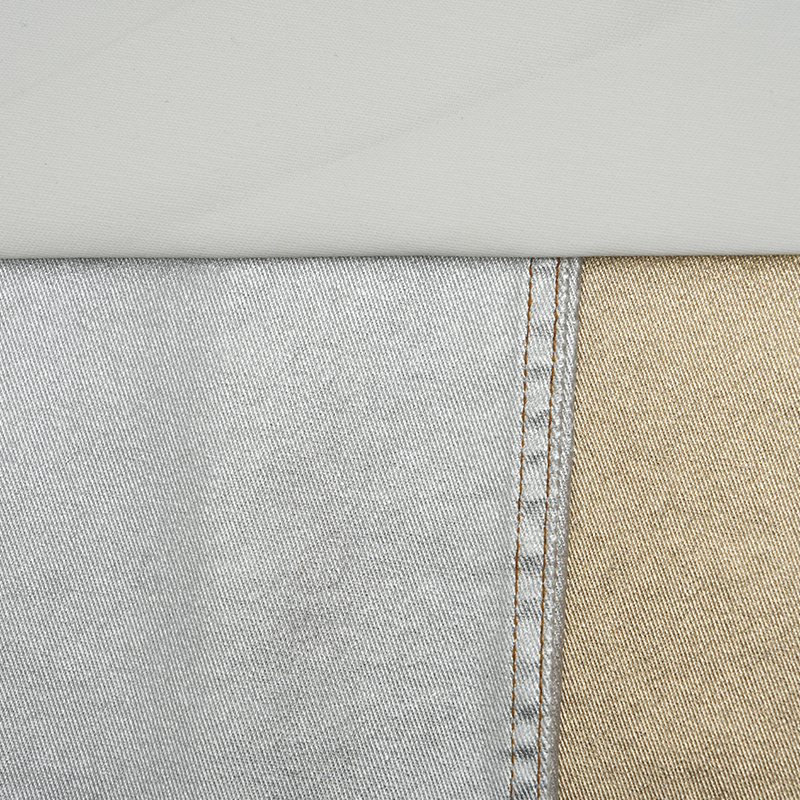Production of various high-end fabrics reaches 7 million meters annually, including a wide range of fashionable new products and exquisite items, with a broad coverage of color patterns.
Coated Dyed Cloth: Revolutionizing Textile Performance and Aesthetics
2025-08-15
In the dynamic landscape of textile innovation, coated dyed cloth emerges as a sophisticated solution that seamlessly integrates aesthetic appeal with enhanced functional performance. This fabric, distinguished by its dye-infused base material and protective surface treatment, transcends traditional textile boundaries, delivering a product that is both visually captivating and remarkably resilient.
At its core, coated dyed cloth represents an advanced hybrid of coloration and protection. The fabric undergoes an initial dyeing process, wherein rich pigments penetrate the fibers, imparting deep, uniform hues that resist fading and washing out. Unlike conventional printing or surface dyeing methods, this technique ensures the color is intrinsic to the fiber structure, thereby guaranteeing long-lasting vibrancy and consistency.
Subsequently, a coating layer is meticulously applied to the dyed fabric. This protective finish acts as a formidable barrier against environmental aggressors such as moisture, abrasion, ultraviolet radiation, and chemical exposure. Coatings can vary from polyurethane and polyvinyl chloride (PVC) to silicone and acrylic compounds, each selected based on the intended application and performance criteria. This layering does not merely safeguard the fabric; it also imbues it with enhanced tactile qualities, such as water repellency, stain resistance, and sometimes a subtle sheen or matte finish, amplifying the fabric’s versatility.
The symbiotic relationship between dyeing and coating endows this textile with unparalleled durability, making it an indispensable material in sectors where aesthetics and endurance converge. In the realm of outdoor furnishings and upholstery, for instance, coated dyed cloth withstands harsh weather conditions without compromising its chromatic integrity or texture. Its resistance to fading under intense sunlight, coupled with an impermeable surface, positions it as a preferred choice for patio furniture, awnings, and marine upholstery.
Fashion and apparel industries have also embraced this innovation, leveraging coated dyed cloth to create garments that marry style with functionality. Designers exploit the fabric’s ability to retain vibrant colors while providing a protective layer against stains and moisture. This is especially advantageous in activewear and outerwear, where garments must endure rigorous use while maintaining their aesthetic allure.
Moreover, coated dyed cloth plays a pivotal role in technical applications such as automotive interiors, luggage, and industrial covers. The fabric’s toughness, combined with its decorative appeal, elevates product value by extending lifespan and reducing maintenance demands. In automotive settings, for example, coated dyed textiles resist abrasion and spills, ensuring that vehicle interiors remain pristine over extended periods.

The manufacturing process of coated dyed cloth demands meticulous precision and expertise. Initial dyeing must achieve homogeneity, avoiding color blotches or inconsistencies. Subsequent coating application requires uniform thickness and adhesion to maintain flexibility and breathability without compromising the fabric’s structural integrity. Advances in technology have introduced eco-friendly coating materials, reducing environmental impact while preserving performance standards.
In addition to physical attributes, coated dyed cloth offers expansive customization opportunities. The dyeing phase permits an extensive palette of hues, gradients, and patterns, while coatings can be tailored to achieve various finishes — from glossy and reflective to subdued and textured. This dual customization capability empowers designers and manufacturers to meet exacting specifications, catering to diverse market demands.
Furthermore, coated dyed cloth exemplifies sustainability potential within textiles. Modern coatings often incorporate recyclable or biodegradable compounds, and the durability of the fabric inherently reduces the frequency of replacement, thereby mitigating waste. Manufacturers increasingly adopt responsible sourcing of base fibers and integrate environmentally conscious dyeing techniques, aligning this textile with contemporary ecological imperatives.
Coated dyed cloth signifies a paradigm shift in textile engineering — where visual sophistication harmonizes with formidable functionality. Its multifaceted advantages, encompassing lasting coloration, environmental resistance, tactile enhancement, and design flexibility, position it as a cornerstone material across myriad industries. As consumer expectations evolve toward products that excel in both form and function, coated dyed cloth stands poised to meet and exceed these demands with unparalleled efficacy.

 English
English 中文简体
中文简体 Tiếng Việt
Tiếng Việt




















